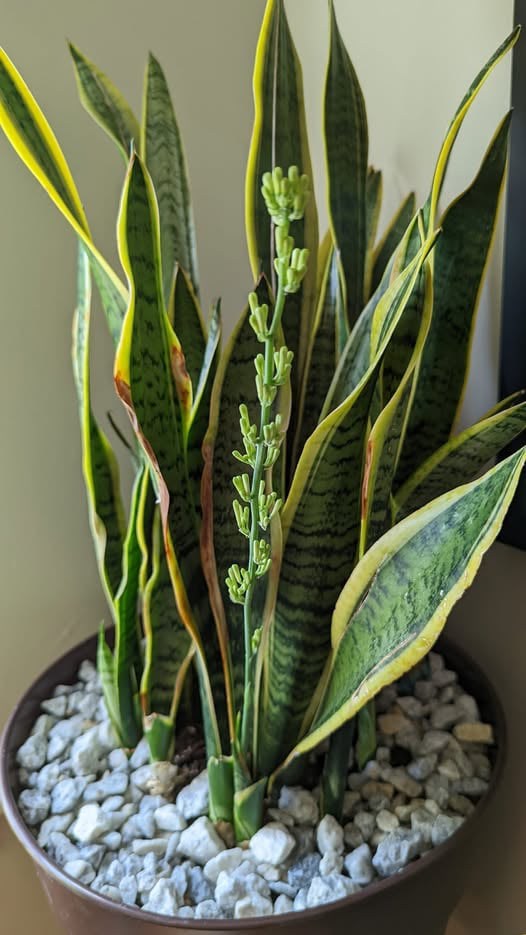Snake plants are known for their upright, spiky leaves and resilience, thriving in a variety of light conditions. In their native habitats, they bloom annually in the spring. However, indoor blooming is less common and often requires specific conditions. The flowers are typically white or yellowish-green and emit a sweet fragrance, especially at night. They usually appear after the plant has undergone a period of dormancy during the winter months.
🌞 1. Provide Sufficient Light
While snake plants can tolerate low light, providing them with bright, indirect light increases the chances of blooming. Placing your plant near a south or west-facing window that receives filtered daylight is ideal. Avoid direct sunlight, as it can scorch the leaves. If natural light is insufficient, consider using a grow light to supplement the plant’s needs.
🪴 2. Keep the Plant Slightly Root-Bound
Snake plants tend to flower when they’re slightly root-bound. This means their roots should be snug in the pot, with limited space to spread out. Being in a confined space can stress the plant, prompting it to flower as a survival mechanism. Only repot when you notice roots circling the top of the soil or coming out of drainage holes.
💧 3. Water Sparingly
Overwatering is detrimental to snake plants. Allow the soil to dry out completely between waterings. During the growing season, water the plant thoroughly but infrequently. In winter, reduce watering even further, providing water only once a month if the indoor air is dry. This mimics the plant’s natural habitat and can encourage blooming.
🌡️ 4. Maintain Optimal Temperature
Snake plants thrive in warmer conditions. The ideal temperature range is between 70-90°F (21-32°C) during the day. At night, allow the temperature to drop slightly to 60-65°F (15-18°C). This temperature change helps trigger blooming. Keep the plant away from cold drafts and heating vents, as sudden temperature changes can stress the plant and prevent flowering.
🌱 5. Fertilize Moderately
Apply a balanced, diluted houseplant fertilizer every 4-6 weeks during the growing season (spring and summer). A 10-10-10 NPK ratio works well for promoting blooms. Avoid fertilizing in fall or winter when the plant’s growth naturally slows down. Over-fertilization can harm your snake plant and prevent flowering.
🧹 6. Prune Dead Leaves
Regularly check your snake plant for any dead, yellow, or brown leaves. These damaged leaves won’t help your plant bloom and can actually hurt its growth. Remove dead leaves by cutting them off at the base, as close to the soil as possible. Use clean, sharp scissors or pruning shears to make clean cuts and avoid damaging the healthy parts. Removing dead leaves helps direct energy to new growth and blooming.
